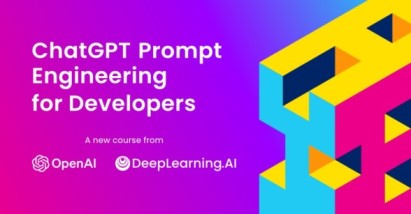OpenAI & DeepLearning.ai: ChatGPT Prompt Engineering for Developers
The emergence of advanced AI language models like ChatGPT has transformed how developers interact with technology. Understanding prompt engineering is essential for leveraging these models effectively. OpenAI and DeepLearning.ai have collaborated to provide a comprehensive resource for developers interested in mastering this critical skill.OpenAI & DeepLearning.ai
1. What is Prompt Engineering?
Prompt engineering is the process of designing and refining inputs (prompts) given to AI models to elicit the desired responses. This technique is crucial for maximizing the potential of language models like ChatGPT, enabling developers to create applications that produce relevant and contextually appropriate outputs.
2. Why is Prompt Engineering Important?
- Maximizing Model Potential: Well-crafted prompts lead to more accurate and useful responses.
- Improving User Experience: Better prompts help create more intuitive and engaging interactions with AI.
- Broadening Applications: Understanding how to frame prompts opens up new possibilities for integrating AI into various domains.
3. Key Components of Effective Prompt Engineering
To be effective in prompt engineering, developers should focus on several key components:
a) Clarity:
- Prompts should be clear and concise to avoid ambiguity.
- Example: Instead of asking, “What can you tell me about dogs?” use “List five characteristics of Labrador Retrievers.”
b) Context:
- Providing context helps the model understand the specifics of the request.
- Example: “As an expert in veterinary medicine, explain the dietary needs of puppies.”
c) Specificity:
- Being specific about the desired output can lead to more relevant responses.
- Example: “Generate a 300-word blog post about the benefits of regular exercise for dogs.”
d) Format:
- Specify the desired format of the response, such as lists, paragraphs, or bullet points.
- Example: “In bullet points, list the steps for training a puppy.”
4. Techniques for Effective Prompt Engineering
Developers can employ various techniques to enhance their prompt engineering skills:
a) Iterative Refinement:
- Start with a basic prompt and iteratively refine it based on the responses received.
- Example: If the initial prompt yields vague results, adjust it to include more details or context.
b) Experimentation:
- Try different phrasings and structures to see how the model responds.
- Example: Test variations of a prompt to gauge which yields the best results.
c) Temperature and Max Tokens:
- Adjust parameters such as temperature (controls randomness) and max tokens (limits the length of the response) to fine-tune outputs.
- Example: A higher temperature may yield more creative responses, while a lower temperature may produce more deterministic outputs.
5. Best Practices for Developers
Here are some best practices for developers to consider when working with ChatGPT:
- Start Simple: Begin with straightforward prompts and gradually add complexity as needed.
- Use Examples: Provide examples within prompts to guide the model toward the desired output style or format.
- Review and Analyze: Continuously review responses to identify patterns in what works and what doesn’t, and adjust accordingly.
6. OpenAI’s Role in Prompt Engineering
OpenAI provides various resources and documentation to help developers understand how to effectively interact with its models, including:
- API Documentation: Comprehensive guides on using the ChatGPT API, including how to structure requests and interpret responses.
- Community Forums: Platforms where developers can share experiences, ask questions, and learn from each other’s successes and challenges.
7. DeepLearning.ai’s Contribution
DeepLearning.ai offers courses and educational content focused on AI and machine learning, including prompt engineering. Their initiatives include:
- Online Courses: Structured learning paths that cover the fundamentals of AI, including practical applications of prompt engineering.
- Workshops and Webinars: Interactive sessions where developers can learn from experts and apply their knowledge in real-time scenarios.

8. Applications of Prompt Engineering
Prompt engineering can be applied across various fields, including:
- Content Creation: Generating articles, blogs, and marketing copy.
- Customer Support: Developing AI chatbots that provide accurate responses to customer queries.
- Education: Creating personalized learning experiences and tutoring systems.
- Research and Development: Assisting researchers in generating hypotheses or summarizing findings.
9. Future of Prompt Engineering
As AI models continue to evolve, the field of prompt engineering will also advance. Developers will need to stay updated on new techniques, tools, and best practices to fully harness the capabilities of AI.
Conclusion
OpenAI and DeepLearning.ai are at the forefront of enabling developers to master prompt engineering for ChatGPT. By understanding the principles of effective prompting and leveraging the available resources, developers can create innovative applications that maximize the potential of generative AI models.
This overview provides a solid foundation for understanding ChatGPT prompt engineering tailored for developers. If you have any specific points or sections you’d like to expand on, feel free to ask!
Table of Contents
Discover more from COMPUTER ACADEMY
Subscribe to get the latest posts sent to your email.
3 thoughts on “OpenAI & DeepLearning.ai: ChatGPT Prompt Engineering for Developers.”